Creating the World of “The Color Purple” With Production Designer Paul D. Austerberry & Set Decorator Larry Dias
For production designer Paul D. Austerberry and set decorator Larry Dias, The Color Purple was a challenge in grounding post-Antebellum South aesthetics with whimsical musical environments. Scouring every nook and cranny of Georgia, the town of Grantville provided seven shooting locations for director Blitz Bazawule’s retelling of the beloved story that follows Celie (Fantasia Barrino), a Black woman trying to find her identity while married to an abusive husband named Mister (Colman Domingo).
Austerberry and Dias carved a visual journey that parallels Celie’s character growth, where muted colors blossom into vibrant hues and patterns. Practical locations created a sense of realism, while interiors were constructed on soundstages for more control. “All the builds were accomplished in very authentic locations for our period and story,” says Austerberry. Locations in Macon, Savannah, and Inman Park became all part of the production design story, while a swamp served as the exterior of the Juke Joint for a sultry performance by Shug Avery (Taraji P. Henson), an inspirational character for Celie.
Below, the pair talk about how the era affected their choices in design, color, and set decoration and how sticking to period accuracy environments even meant making changes to the script.
How did you and Blitz want to approach the period look that is also a musical?
Austerberry: Blitz was a musician before he was a filmmaker, so we talked a lot about the music while scouting. We decided that this wasn’t going to be a stock period film, but we were going to go through Celie’s imagination to create these other visual worlds. The important thing was to be careful and set the tone of the film, so it had to be really grounded first before we go off into these imaginary worlds.
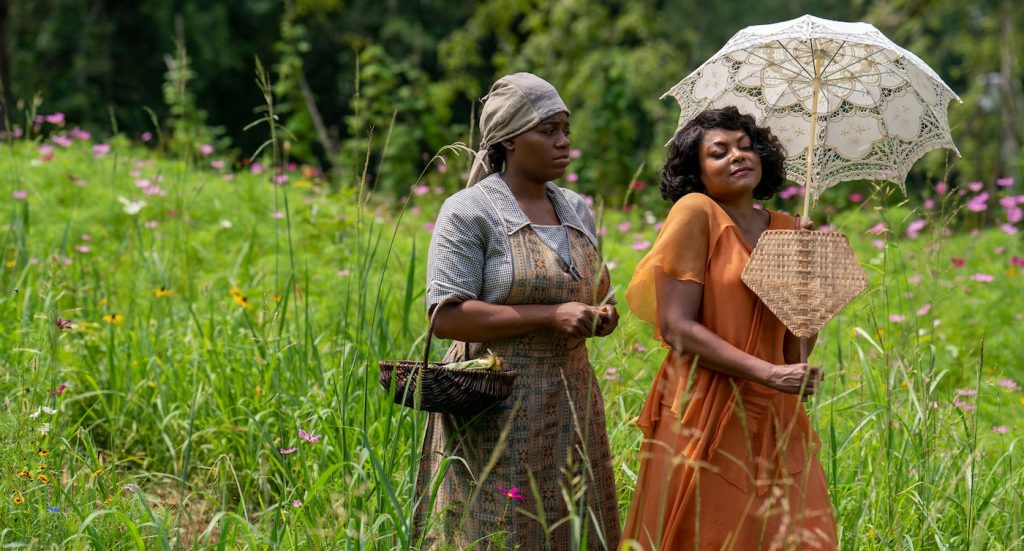
A large portion of Celie’s life takes place in Mister’s home. Can you talk about its design?
Austerberry: We didn’t want it to be an Antebellum-style house. We decided to have a little smaller-scale house that didn’t have the overtones of an antebellum. It was a tough hunt to find the house because we wanted it to be a certain scale, and it needed to have two floors. We found it in Carroll County, Georgia. It was abandoned for 20-odd years and owned by an African American engineer, which is interesting for the story. We added the second floor, a porch, and an addition on the back.
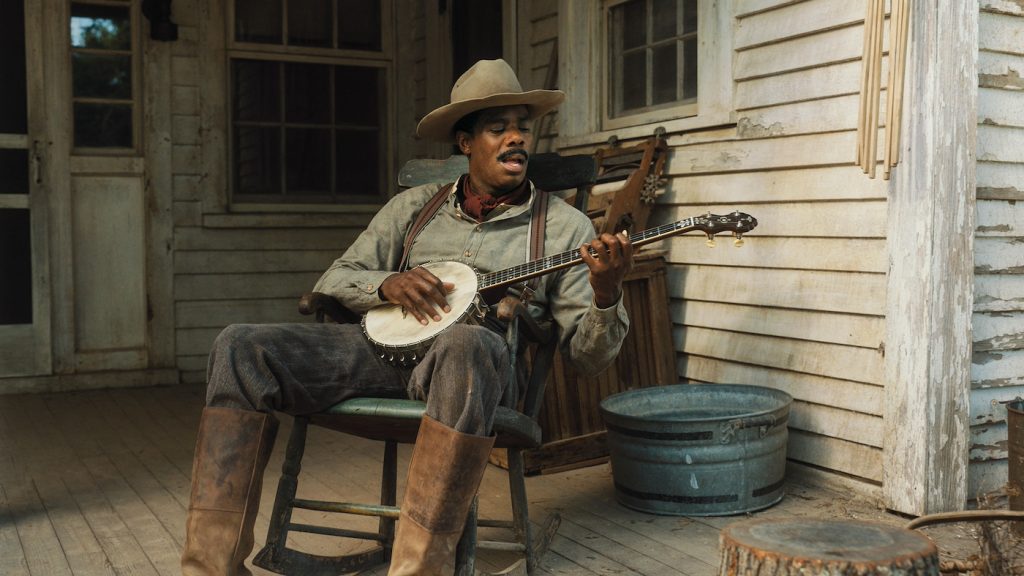
When Celie arrives at his house, it’s in a dilapidated state before she puts her touch on it.
Austerberry: It’s a decrypted mess with chickens and water all over. The kids are running rampant. As the story progresses, Blitz, Larry, and I talked about how her mother taught Celie early how to sew. The mother’s sewing basket is something Nettie gives her when Celie marries Mister. She uses it to start cleaning up the house and add all these little additions like curtains. She made it more of a home, and you have to look at different viewing to see all the details.
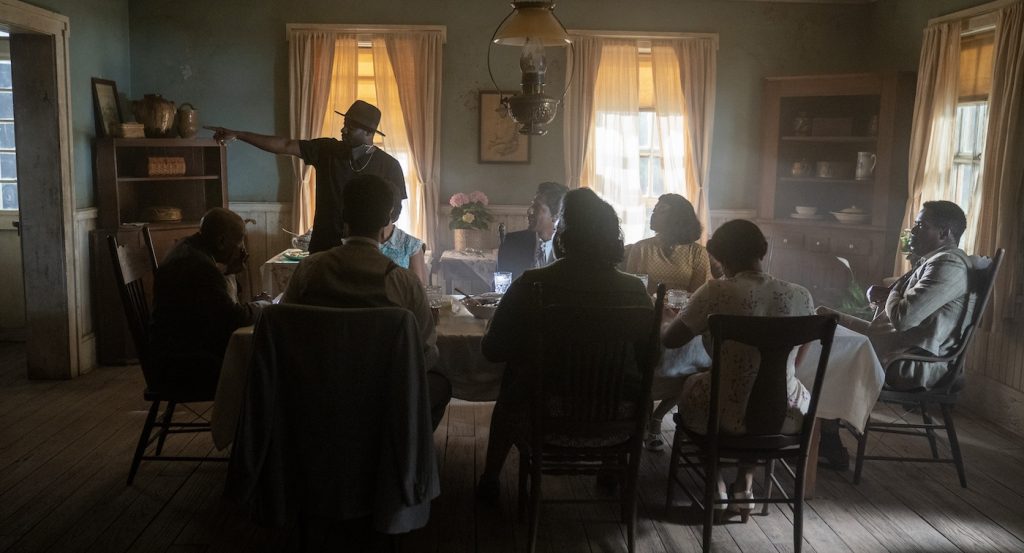
We see Celie speak out against Mister in the dining room, a set that has a lot of personality and color. How did you want to decorate that room?
Dias: That room develops as Celie’s character also develops. She started out in complete disarray, where everything was a mess. Then she sort of put her hands on it. She is a very giving person who gives without expecting anything back. She sort of develops that and makes it a home even though it was never her home. She was almost a guest in it. She put her stamp on it and brought this joy and life to it. We did it in subtle ways because they wouldn’t have the funds necessary to make big, bold changes. It’s done with plants and curtains and the linens on the table. Her sewing space is in there to make it feel a little more developed. She made it a home for the people in it, and that’s very symbolic of her character.
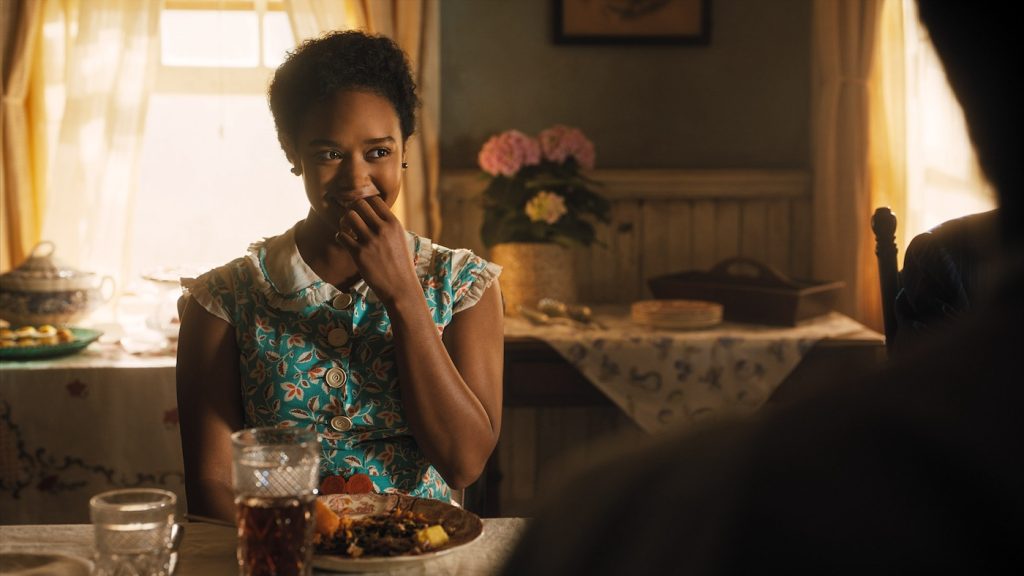
One of Celie’s defining moments is the bathroom scene with Shug. The set separates itself from the rest of Mister’s home. How did you approach it?
Austerberry: The rest of the house is in a cooler color palette of muted greens, blues, and beiges. The first time you go into that bathroom, you see this burgundy color and deep patterns. We thought this could have been a place where Shug comes back to recoup from the big city life, and she left a bunch of her trappings and has money to have this bathtub. The colors are part of Shug as she rides in this red car and wears this red dress. Red is important as we go along as it transfers to Celie towards the end.
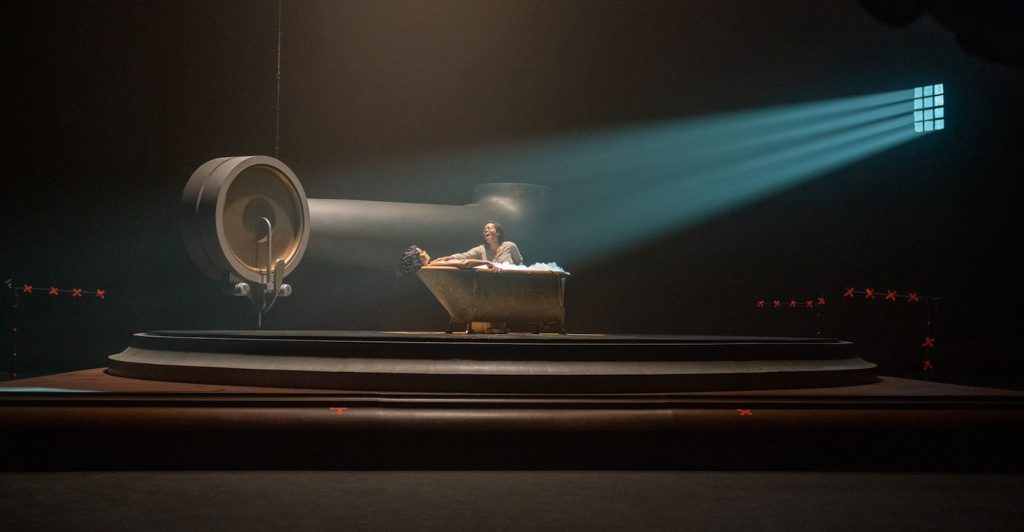
Yes, you wouldn’t think a bathtub would be part of those less fortunate in the region.
Dias: When it was scripted, they talked about the bathroom and steam coming out of the bathroom taps. Paul and I were looking at all this research in the rural South, and it did not involve indoor plumbing, so we had to go to Blitz and say that this is not really period-appropriate. We wanted to honor the period and the situation that people were living in as we didn’t want to make the movie version of it. At the same time, we are doing a movie with a lot of fantasy sequences, but for the parts that are real in the film, we wanted them to feel really real. So it turned out to be a bathtub in the room which consequently is the only bathtub in the whole house. We approached it like it was a shrine to Shrug.
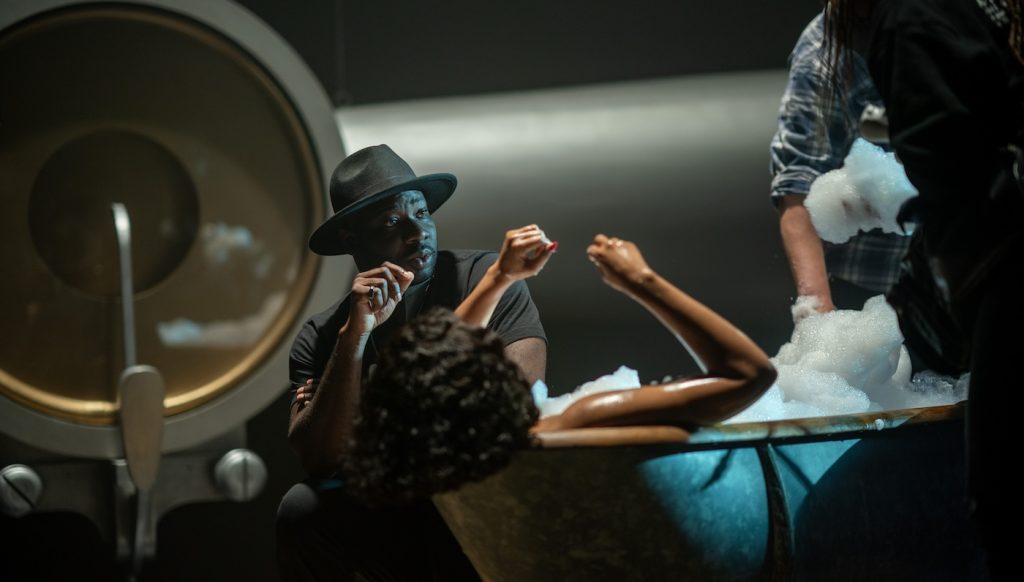
Speaking of Shug’s red dress, what went into creating the Juke Joint set as she makes her entrance via boat?
Austerberry: Something important to me was this feeling that Shug is bringing in music, plugging the music into that building. The exterior is a practical location. We found this barge and created this amazing entrance, and cinematographer Dan Laustsen created this blue lighting behind her as she comes through the doors. When we went indoors, it’s a set build that’s only a little bit bigger than the exterior. When you’re doing a musical, you think of stylized numbers, but this movie had to be grounded in reality. It meant small, more realistic spaces to make the dances vibrant. Then Larry got some amazing decorations. It was a really fun set.
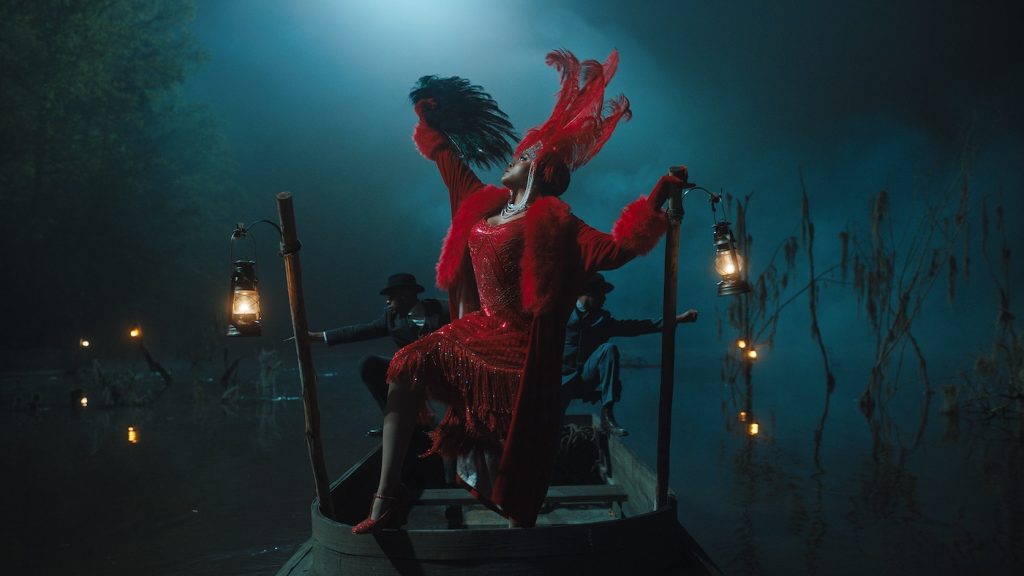
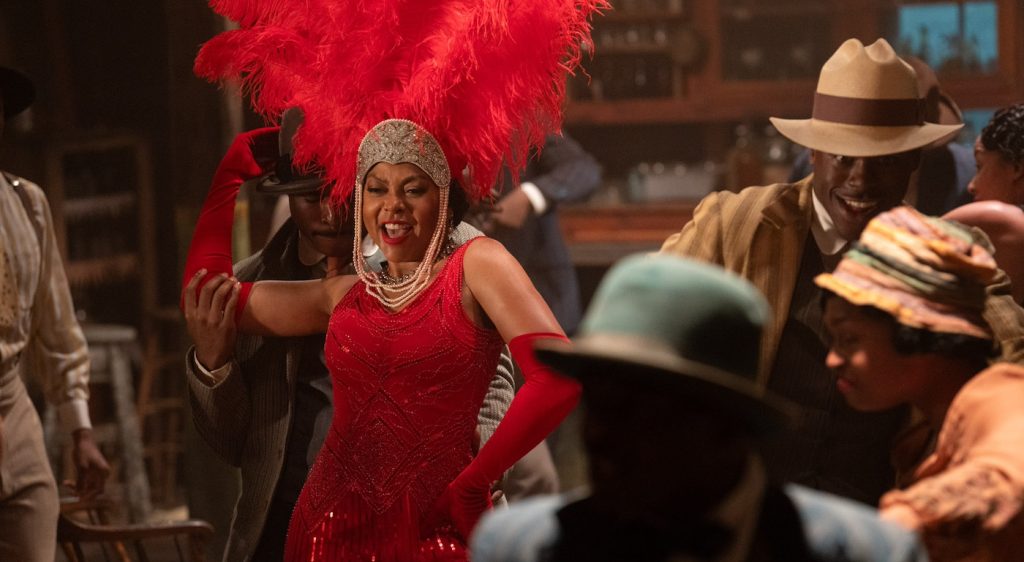
Did you have a guiding light for decorating the Juke Joint?
Dias: What I wanted to achieve was believability. I wanted it to feel like Harpo [portrayed by Corey Hawkins, owner of the Juke Joint and the son to Mister] did not have a surplus of money, and this was a dream he had. I wanted to fill it with things he could truly acquire, all completely mismatched, where a lot of fits could have been handmade or scavenged. None of it had any sort of nobility to it. Almost found objects. So that’s how I went about it, looking for mismatched things to place in there but doing it in a way that was stylized and had an ethereal quality to it.
Since we can see outside of the Juke Joint, how did you match the interior set with the location?
Austerberry: The blue lighting and the swamp as a backdrop created a proscenium line with the stage, so we did it practically with force perspective using smaller lights to match the exterior shots.
Dias: Paul was brilliant in creating a shortened set and we lit in the same way as the exterior location using barn lanterns. We found them in different sizes, all the way to the tiny wee ones. So we could place them out and trick your eye so it felt like the same space. Then we put this plastic down on the set floor that had this reflective quality to it. It made these ripples of water on the floor, which was a happy accident.
Celie reunites with Nettie (Ciara) under a gorgeous tree sequence. How did you find the location?
Austerberry: We were scouting south of Savanna, and I was looking for an amazing tree, and we found a grove of trees the Prime series The Underground Railroad was using and they had it surrounded with three shacks underneath it. We convinced the owner to allow us to bring in movers to move them to another part of the property, and then we restored the tree to its glorified beauty.
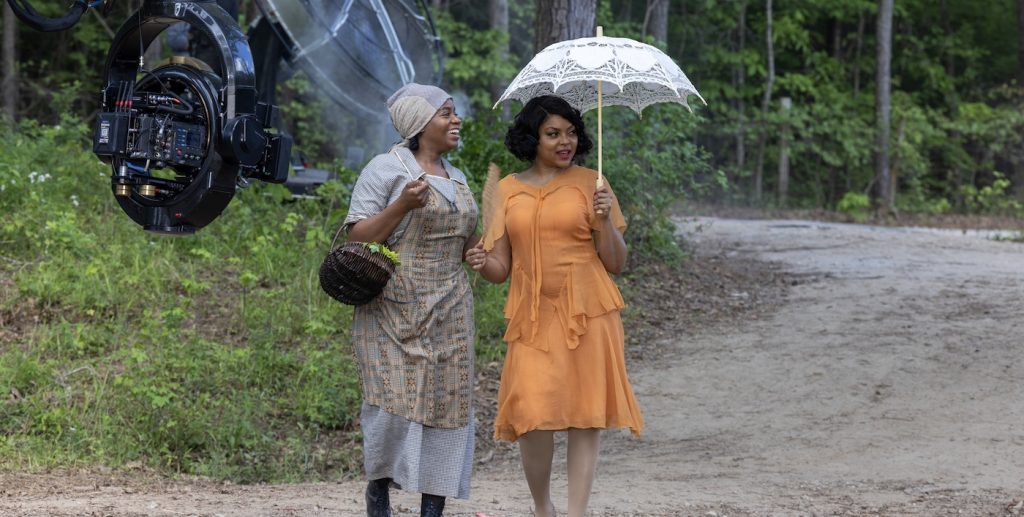
We actually see it earlier on during the pat-a-cake scene with Celie and Nettie, right?
Austerberry: Yes, we looked at it like a family tree. It’s a place Celie remembers from her childhood, and she comes back to it.
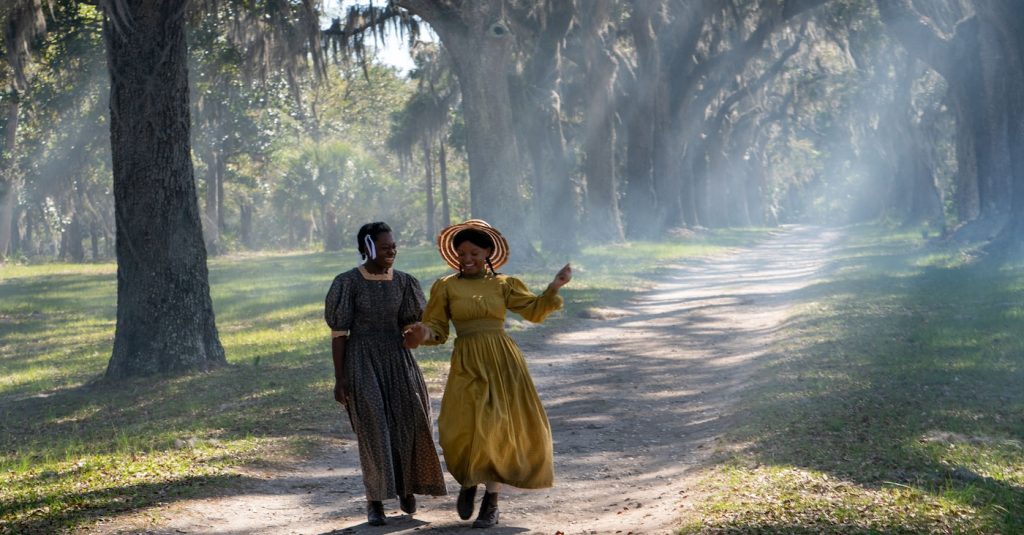
Was the circle of tables around the tree the idea from the start?
Austerberry: The script was written as an Easter dinner in a field of lilies, which may have been a reference to the original film. It felt completely appropriate to do it in a big circle because the circle is symbolic as well. The circle of life, the journey of life.
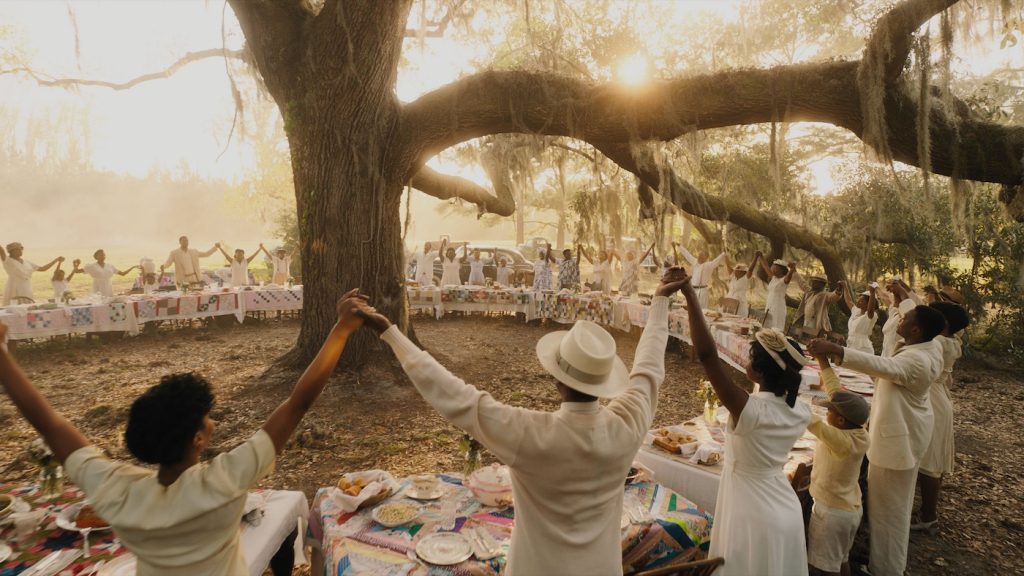
Part of the set decoration in the scene is the quilts Celie makes. What went into designing them?
Dias: One thing that is part of African culture is quilting. It was done out of necessity and made from children’s clothing. Women would take scraps of fabric and make quilts out of it as a functional piece for a domestic environment. We found a group of women from that time period, the Gee’s Bend, who made quilts in a freehand way with an imbalance of colors and weight to them. I wanted the quilts in the scene to be one piece of art.
It’s also nice there are several quilts instead of one giant one Celie could have made. Was that always the intention?
Dias: Blitz wanted to span the gap between fantasy and reality and have a series of quilts instead of one. We went out and handpicked what I felt had proper uniqueness that didn’t feel made by a church group or had an ordinary approach. I wanted the quilts to have an organic quality to them. Then, with the white palette at the beginning of the film and at the end, it fits perfectly well because white has a purity to it, and both Celie and her sister Nettie are pure of heart.
The Color Purple is in theaters now.
For more on The Color Purple, check out these stories:
“The Color Purple” Editor Jon Poll on Finding the Rhythm of This Moving Adaptation
“The Color Purple” Costume Designer Francine Jamison-Tanchuck’s Stunning Creations
How “The Color Purple” DP Dan Laustsen Made Visual Music
Featured image: TARAJI P. HENSON as Shug Avery in Warner Bros. Pictures’ bold new take on a classic, “THE COLOR PURPLE,” a Warner Bros. Pictures release. Photo by Lynsey Weatherspoon



